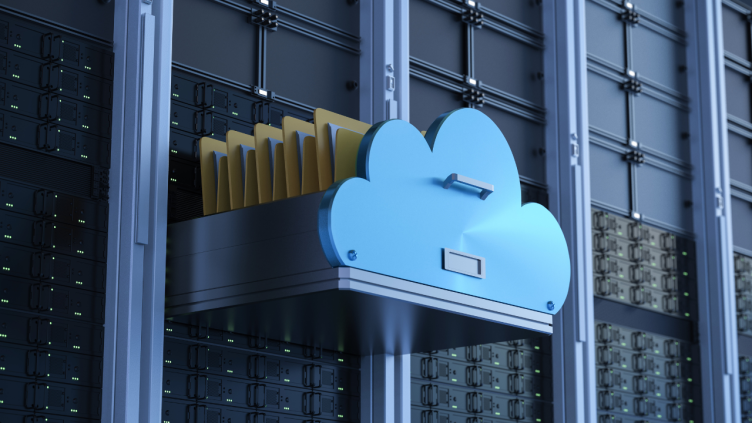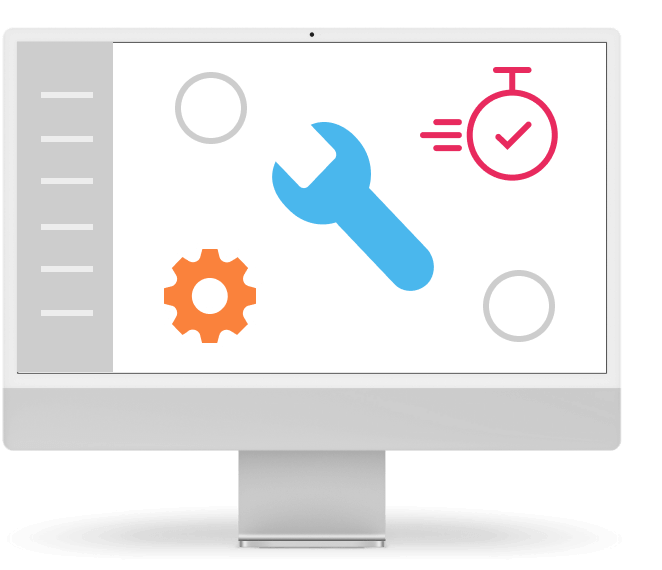What to Look for and What to Avoid When Choosing... Physical Infrastructure
Companies are fleeing the cloud. But what steps should they take before moving back to on-premise physical server rooms?
This idea is neither new nor unrealistic. There are indeed companies that have hit a rough patch when operating their IT environment in the public cloud. The inefficiency of this environment has led them to consider alternatives.
Although there are several alternatives, in today’s installment of the mini-series What to focus on and what to avoid when choosing… we will look at the option of returning to the roots, i.e. physical servers.
Companies most often come across three basic reasons why they are considering this transition:
- Control – there is currently a very lively debate about how best to secure internal data. Choosing local hardware, if implemented correctly, provides maximum security that can never be achieved in a purely cloud environment from an external provider.
- Compliance – legal requirements for the operation of IT systems, data security and obligations within regulated industries are increasingly emerging. Physical infrastructure can be a good choice to cover these obligations.
- Finance – many companies can no longer afford the public cloud. They must therefore calculate carefully whether physical servers will not be an even worse option. Their costs include not only investments, but also operation and maintenance. One of the important aspects is the development of the energy market.
We will now take a detailed look at the individual areas that a company needs to evaluate, as well as the most common mistakes that companies make when setting up their own server room. This article will help you take the first step in evaluating whether a physical server room is the right direction for your business.
Planning and Need Assessment
Since a server room requires an initial investment, it is necessary to conduct a detailed survey of needs and set the correct equipment planning accordingly. It is necessary to take into account the current state, but also development in the mid-term horizon. Physical equipment has a certain lifespan and you will definitely want to get the most out of it.
Be careful though! Each type of hardware can have a different lifespan, so do not forget to consider potential renewal.
The choice of location will also be reflected in the costs. You may have a certain space in mind, but it is not safe from natural elements. Another is not close enough to the backbone network and the costs would be very expensive. Each choice has its pros and cons, so take enough time to evaluate which solution is the most effective.
Then there is also the choice of technologies and systems that will run on the servers. Their choice will be reflected in the future capabilities of the entire environment – scalability and modularity. After all, not only will your company evolve, but also the technology around you. It is not a good choice to choose a rigid server room environment.
What Does a Server Room Require?
There is a romantic notion that a server room is simply an environment where servers run, which we cool and secure. But the reality is much more detailed. The list of needs of a server room is quite long. See for yourself.
- Space
- Suitably selected racks
- Protective elements of racks
- Dedicated electrical circuits
- PDU
- UPS backup
- Energy backup in case of a longer outage
- Cooling units
- Cooling distribution systems
- Cooling redundancy
- Fire protection elements
- Physical protection elements
- Protection elements against natural phenomena
- Monitoring sensors
- Monitoring systems
- Monitoring center
- Camera systems
- Technological equipment
However, these 18 categories are not a complete list of requirements. They are groups of measures that themselves contain further sub-steps.
But we are only talking about the startup and operation. Another separate chapter is maintenance. Every system requires regular services. In addition, you need to continuously monitor the health of all equipment and respond immediately in the event of a failure or interruption of operation.
This also applies to backup systems, so if you follow the industry recommendation for at least N+1 redundancy, then more than just the operational equipment itself needs your attention.
In addition, the maintenance plan does not only include long-term items. Some areas of the server room require attention even several times a month. This is reflected in the labor costs for technicians.
Economic View
Now that we’ve talked about the requirements, the question naturally arises – how much will it cost?
The answer is – a lot. Not only does the price of the hardware itself fluctuate but you must not forget that a server room requires planning, analysis, design, installation, operation and management. All of these require experts.
For safe operation, it is also necessary to comply with security and legal regulations. These are both in the physical and cyber realms. That means more and more experts to the team.
When a server room is built correctly, it is a long-term and high investment.
Common Mistakes and How to Avoid Them
But what if it is not built correctly. What if this element is removed here and another element there because we do not need it. Such an approach is a gamble with the ability of the company to function. Today’s world is dependent on IT. If IT does not work, nothing works.
So when considering savings, it is advisable to calculate whether the company can afford an outage. If so, how long?
—
Another mistake is to underestimate future growth. Of course, you will not buy servers in an unnecessarily large stock, but what about space? Is your server room large enough to accommodate another server? Another rack? The same applies to electricity distribution, cooling and security elements.
That is why you need a real expert for planning. Someone who can balance the current situation, potential growth and economic efficiency.
—
Another big trap is an unprofessional view of server needs. It is true that regular air conditioning can also cool down the operation, but is it the right choice? There is a reason why there is a market for specialized equipment for server rooms. A server is not an ordinary computer and, given its function, it needs an environment that will damage it the least. That is, no excessive heat, dust or humidity.
It is possible to save money on some elements of the server room, but quite often the savings are elsewhere than the layman sees them. Here too, expert advice is needed to find a suitable solution.
—
What must also not be missing is detailed monitoring and customized alerting. If something is happening in the server room, you need to know about it. You cannot rely on everything to run smoothly and if something goes wrong, technicians will come to the rescue.
The basis of server room operation is prevention. If you skimp on it, then you will not save anything, because the costs of the problem will far exceed the costs of preventing it.
—
Bureaucracy is also a major stumbling block, in the neutral sense of the word. In order for a server room to fulfill its purpose, it must start with a well-prepared analysis and project plan. Its operation should, in turn, be accompanied by the addition of detailed documentation that will ensure continuity of operation, even if the technical team is replaced.
Every server room is different, so it is necessary to have the most detailed instructions possible. Technicians can then better navigate the steps and activities they need to do.
—
There is another myth related to staffing. Although it is not the priviledge of physical infrastructure, it is appropriate to include it here. Simply put – not every IT specialist is made the same. Just as you would not require any procedure from a specific doctor, but one that is in line with his specialization, this principle also applies to IT fields.
Designing, operating and managing a server room require different expertise, so do not expect one IT specialist to do everything.
In Conclusion
Operating in a physical server room is not good, not terrible. Every company has its own needs, and for some, on-premise operation is the right choice. However, it must always be preceded by the steps we discussed in this article. Otherwise, the company is asking for some real trouble.
What is the goal here? To have a server room that is reliable, secure, and economical in the long term. However, this requires adhering to best practices and finding a partner who knows what they are doing to build it.
- Do you want to find out if physical infrastructure is the right path for you?
- Do you want to know what your IT TCO is?
- Are you considering repatriating from the public cloud?
We can help you with all of this. Contact us at obchod@tcpro.cz.





